|
|
Zur Navigationshilfe
BO /contentBottomTemplate
Tight binding models for high temperature superconductors
This page lists a set of tight-binding models that are suitable to describe high temperature superconductors
Some of the models have been compiled from the literature for comparison, others are calculated using first principles calculations or adjusted to match experimental measured quantities.
For each model, the hopping parameters are given in a comma separated file (csv), and basic plots of the band structure and Fermi surface are provided for comparison.
The tight-binding file contains lines with the following format:
rx, ry, rz, a, b, Re(t), Im(t)
Here ri is the i-th component of the real space vector that describes the hopping process, a and b are integer numbers labeling the orbitals and the last two entries are the real and imaginary part of the hopping (usually given in eV).
The corresponding Bloch Hamiltonian (in orbital representation) can be obtained by a Fourier transform and summation over all lines to yield the matrix Hab.
|
Models
|
|
5 band model for FeSe matching the eigenenergies as measured within Bogoliubov quasiparticle interference (BQPI, Sprau et al.) and consistent with ARPES measurements of the Fermi surface and with measurements of estimated areas of Fermi surface cuts via quantum oscillations (Terashima et al.). The data file can be downloaded from the links below.
The spin-orbit coupling is approximately included as (imaginary) on-site couplings as, described in
Andreas Kreisel, Yan Wang, Thomas A. Maier, Peter J. Hirschfeld, Douglas J. Scalapino
Phys. Rev. B 88, 094522 (2013)
Spin fluctuations and superconductivity in KxFe2-ySe2
If you use the data provided here, please cite the original work that published the tight binding parameters:
Peter O. Sprau, Andrey Kostin, Andreas Kreisel, Anna E. Böhmer, Valentin Taufour, Paul C. Canfield, Shantanu Mukherjee, Peter J. Hirschfeld, Brian M. Andersen, J.C. Séamus Davis
Science, 357, 75 (2017)
Discovery of Orbital-Selective Cooper Pairing in FeSe
the same tight file is also published in the supplemental materials
here
Two-dimensional models derived from this electronic structure can be found following the links above.
This model has also been used in the following works:
A. Kreisel, Brian M. Andersen, Peter O. Sprau, Andrey Kostin, J.C. Séamus Davis, P. J. Hirschfeld
Phys. Rev. B 95, 174504 (2017)
Orbital selective pairing and gap structures of iron-based superconductors
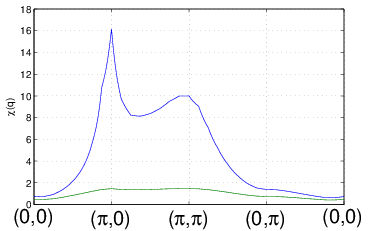
Susceptibility in the nematic state of FeSe calculated
using a model including orbital selective quasiparticle weights that enhances spin-fluctuations at (π, 0).
|
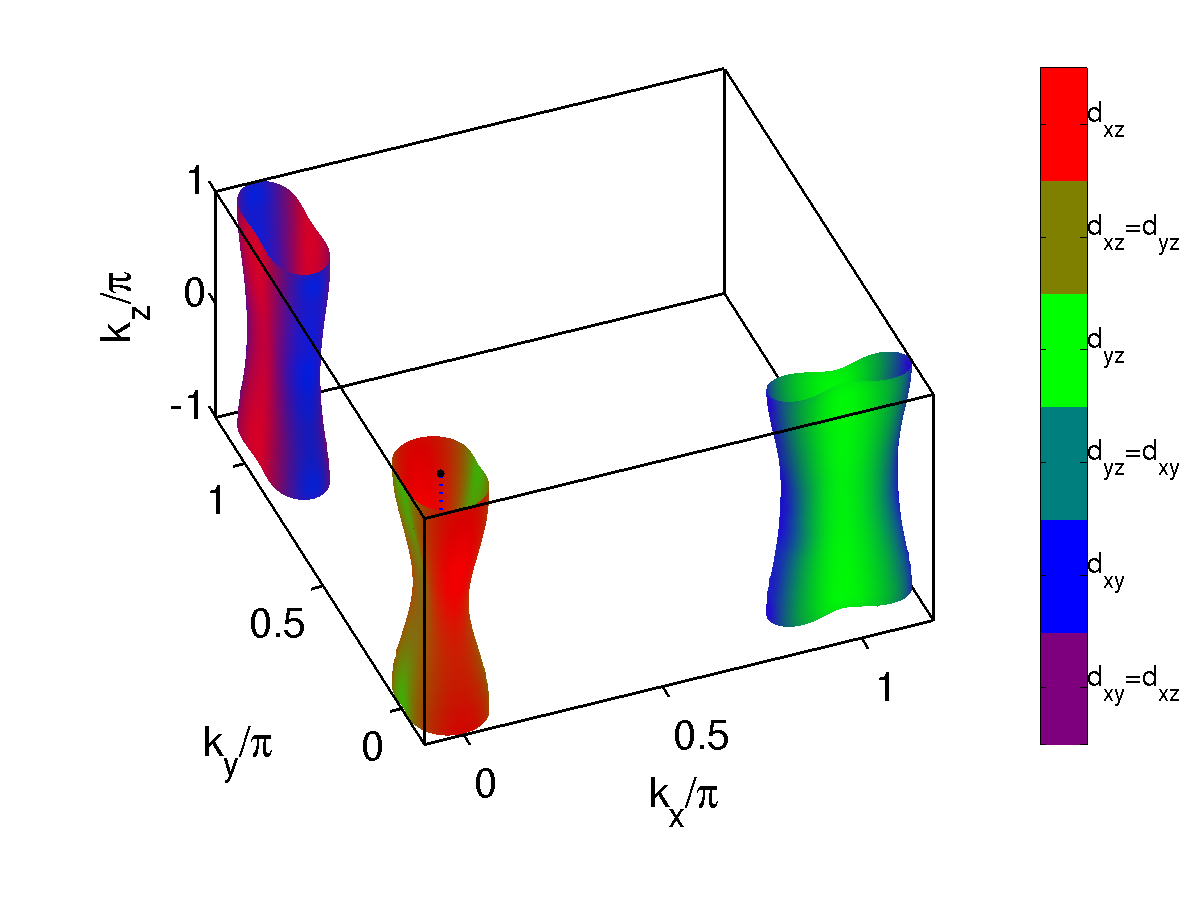
Fermi surface of FeSe from the tight-binding parametrization.
|
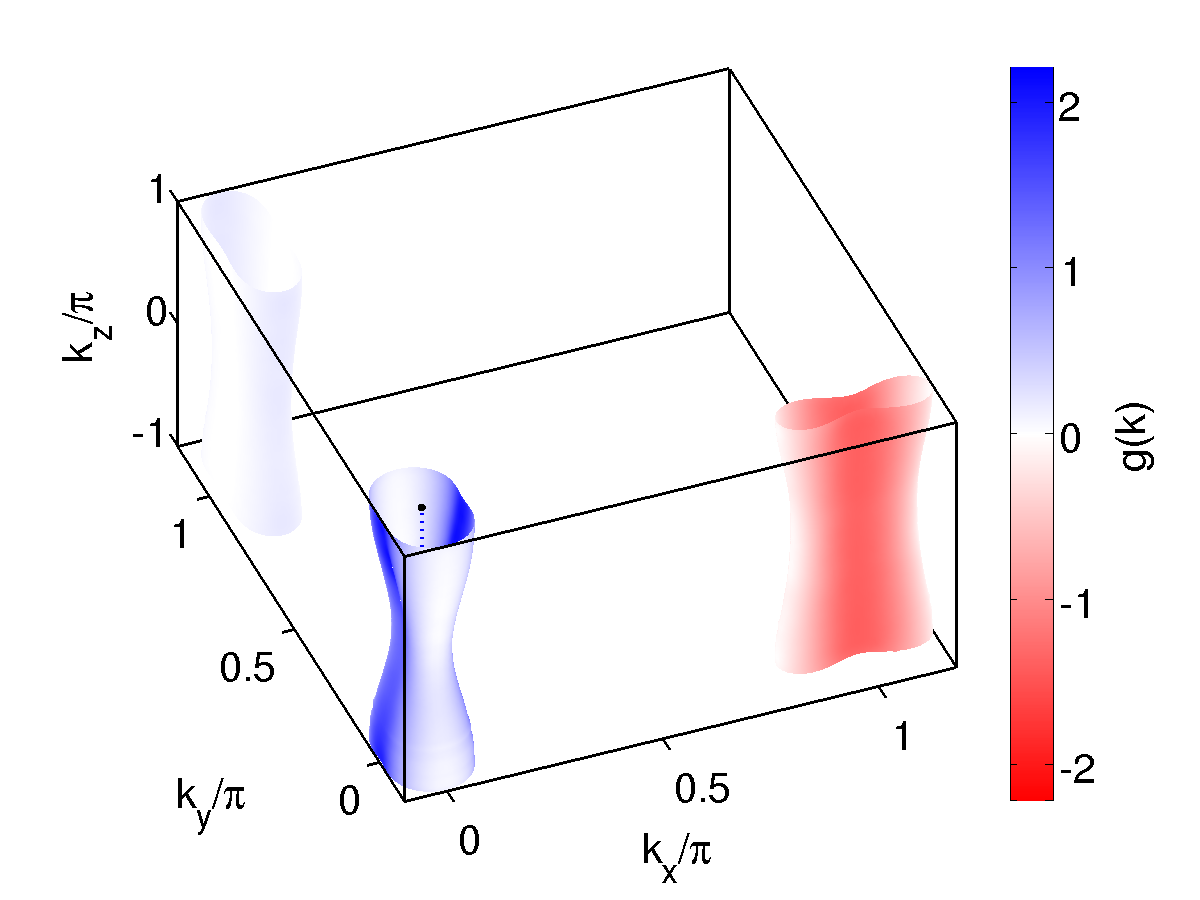
Superconducting order parameter as calculated from a modified spin-fluctuation theory.
|
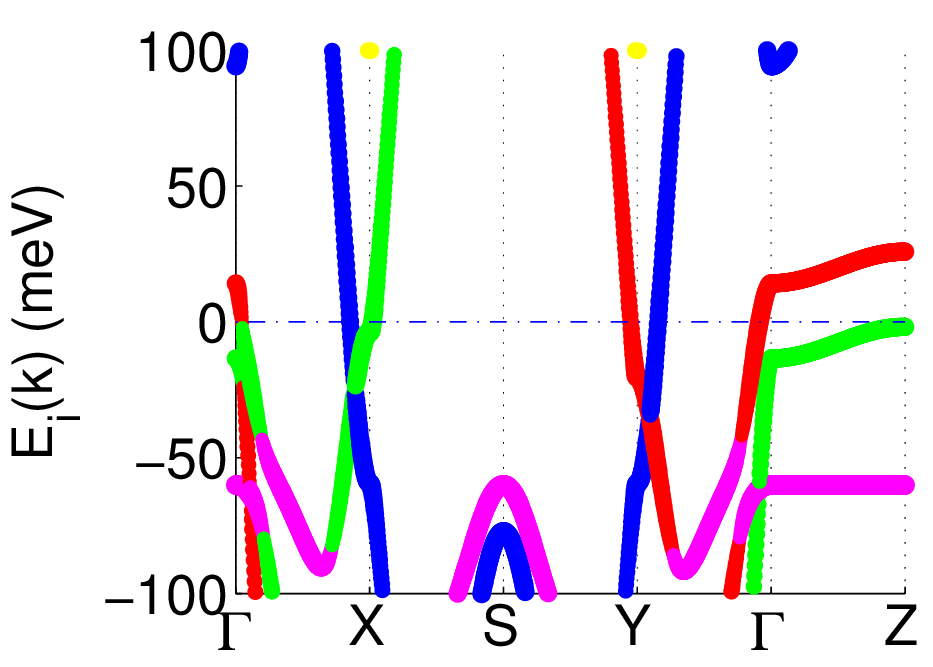
Details of the electronic structure along high symmetry directions, colors indicate orbital with largest matrix element.
|
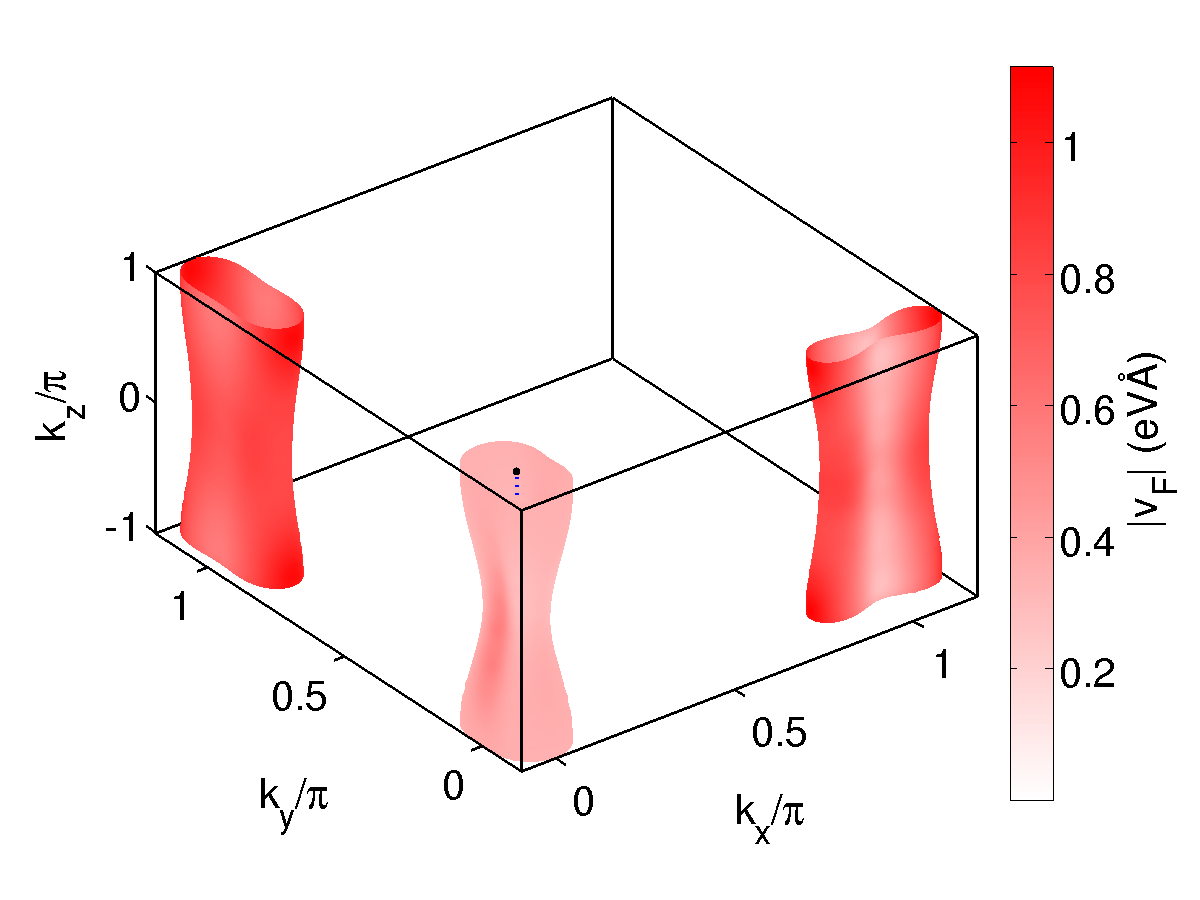
Fermi velocity as calculated from the tight-binding parameterization.
|
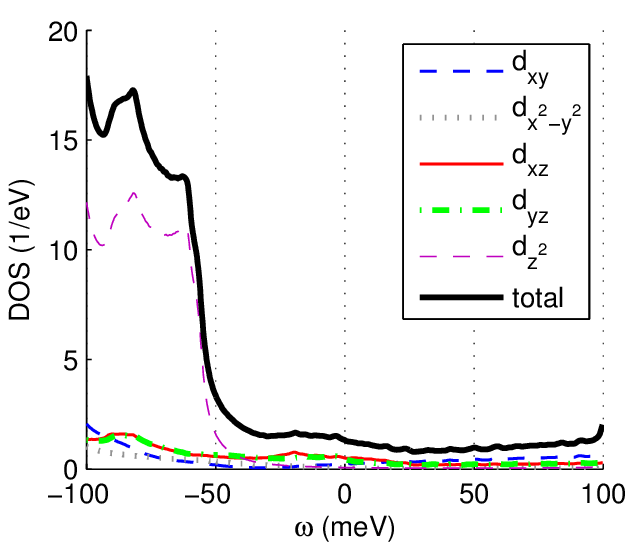
Density of states of the tight-binding model.
|
|
|